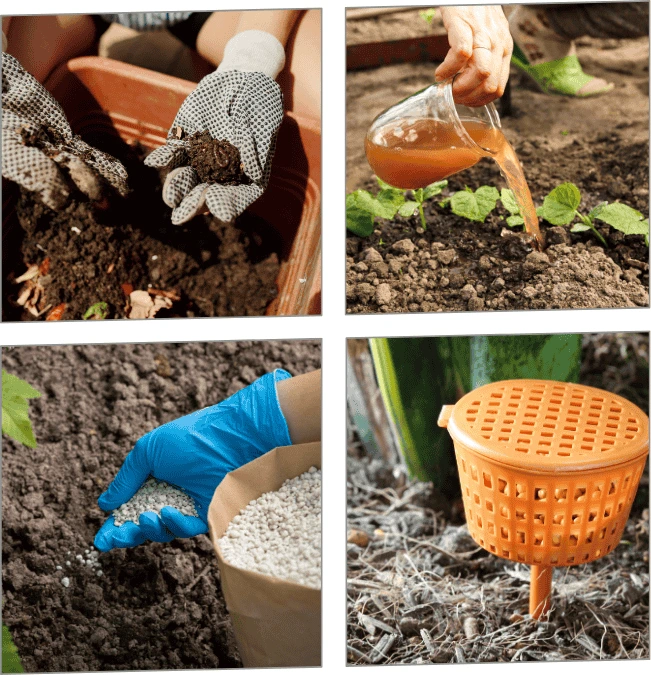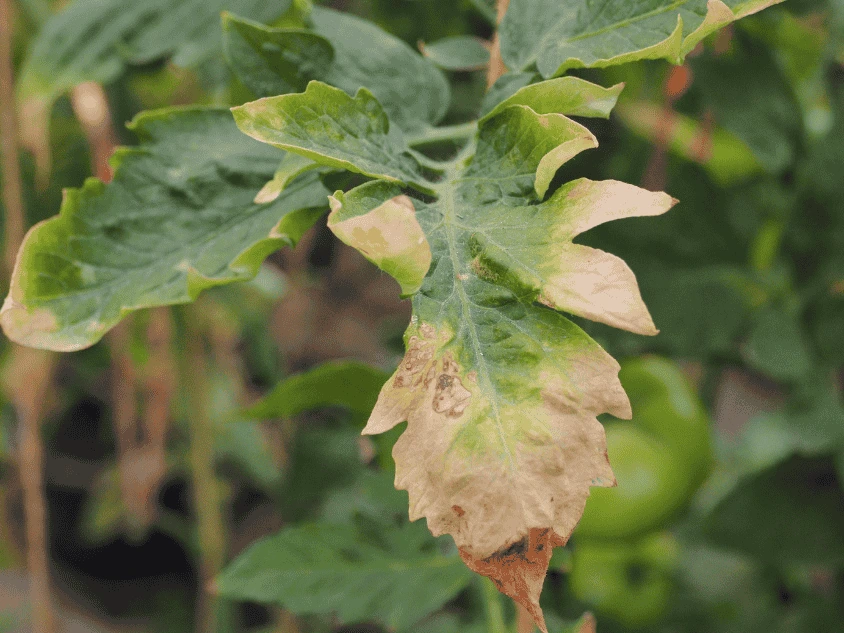Nourish Your Vertical Garden for Optimal Growth 🌿
Fertilization for vertical gardens is essential for ensuring healthy growth and optimal yields. 🍅
🥬 In this complete guide, we will explore how to fertilize vertical gardens in small spaces effectively, focusing on the best techniques and methods to nourish your plants in these compact environments. 🏡✨
💧 Understanding the Need for Fertilization in Vertical Gardens 🌱
- ✅ Limited Soil Volume: Vertical gardens often use shallow containers with minimal soil, which can quickly deplete nutrients. 🌿
- ✅ Intensive Cultivation: Close planting in vertical setups requires frequent nutrient replenishment. 🪴
- ✅ Enhanced Growth: Proper fertilization boosts plant health, leading to better yields and vibrant foliage. 🌸🍓
💡 Quick Tip: When using organic fertilizers, always dilute them well to avoid over-fertilizing! 🥤
🧪 Choosing the Right Fertilizer for Your Plants 🌻

1️⃣ Organic Fertilizers 🌱
- Examples: Compost, vermicompost, bone meal, blood meal, fish emulsion. 🥬🐟
- Benefits: Eco-friendly 🌍, improves soil structure over time.
- Best For: Edible plants like herbs 🌿, vegetables 🥗, and fruits 🍓.
2️⃣ Synthetic Fertilizers 💊
- Examples: NPK granules, liquid fertilizers, slow-release pellets.
- Benefits: Fast-acting ⚡ and tailored to specific plant needs.
- Best For: Ornamentals 🌷 and high-demand crops like tomatoes 🍅.
3️⃣ Liquid Fertilizers 💦
- Examples: Seaweed extract 🌊, compost tea 🍵, diluted solutions.
- Benefits: Quick absorption; ideal for foliar feeding and soil drenching.
- Best For: Correcting nutrient deficiencies rapidly. 🌿
4️⃣ Slow-Release Fertilizers 🕰️
- Examples: Osmocote, coated granules.
- Benefits: Releases nutrients gradually, perfect for busy gardeners. 🪴
- Best For: Plants with steady nutrient needs. 🌼
🥦 Essential Nutrients for Vertical Gardens 🌿
- Nitrogen (N): Promotes lush, green foliage 🌱; vital for leafy vegetables like lettuce 🥬.
- Phosphorus (P): Encourages root development and flowering 🌸; essential for fruiting plants 🍅.
- Potassium (K): Boosts plant vitality and disease resistance 🛡️.
- Micronutrients: Calcium, magnesium, iron – crucial for overall plant health. 💪
📝 How to Properly Apply Fertilizers in Small Spaces 🪴

📍 Step 1: Assess Plant Needs
- 🌺 High Demand: Fruiting plants (e.g., tomatoes 🍅, peppers 🌶️).
- 🌿 Low Demand: Herbs and succulents require less frequent feeding.
🧴 Step 2: Prepare the Fertilizer
- Follow package instructions 📦.
- Dilute organic options (compost tea 🍵, liquid seaweed 🌊) appropriately.
💧 Step 3: Apply Fertilizer
- Soil Application: Sprinkle granules or water with liquid fertilizer. 💦
- Foliar Feeding: Spray leaves with diluted solutions for quick absorption. 🌱
🗓️ Step 4: Schedule Feeding
- Fertilize every 2-4 weeks, adjusting for plant needs. 🌿
- Reduce frequency during dormant seasons. ❄️
⚠️ Common Fertilization Mistakes & How to Fix Them 🪴

🚫 Common Mistake: Overusing Liquid Fertilizers
🔎 Why It’s a Problem:
Liquid fertilizers act quickly and are easily absorbed by plants 🌱, which is why they should be applied with caution. Overuse can lead to the accumulation of salts in the soil 🧂, causing root burn and hindering the plant’s overall growth and nutrient absorption. 🚫⚠️
✅ How to Correct It:
- 🧴 Dilution:
- Always dilute liquid fertilizers to 1/4 of the recommended dosage to provide nutrients without overwhelming your plants. 🌿💧
- 🗓️ Space Out Applications:
- Avoid applying liquid fertilizer with every watering. Instead, apply once a month and complement feeding with organic or slow-release fertilizers. 🕰️🌱
- 🌿 Monitor Sensitive Plants:
- Delicate herbs like basil 🌿 and parsley 🌱 are especially vulnerable to nutrient overload. Always use the lowest recommended concentration for such plants to prevent damage. 🌸✨
💡 Tip: Regularly flush the soil with plain water to prevent salt buildup and keep roots healthy. 🚿🌱
🚫 Common Mistake: Using Excess Nitrogen on Flowering Plants
🔎 Why It’s a Problem:
Nitrogen is essential for promoting lush, green foliage 🌿, but using too much can negatively affect flowering and fruiting plants like tomatoes 🍅 or orchids 🌸. High nitrogen levels encourage excessive leaf growth at the expense of flowers and fruits, resulting in poor yields. 🚫🍃
✅ How to Correct It:
- 🧪 Use Balanced Fertilizers:
- Choose fertilizers with an appropriate NPK ratio (Nitrogen-Phosphorus-Potassium), like 10-20-20, which provides more phosphorus to support healthy blooming and fruit development. 🌷🍅
- 📅 Adjust According to Growth Cycle:
- 🌱 Vegetative Stage: Use a nitrogen-rich fertilizer to promote strong leaf growth.
- 🌸 Flowering & Fruiting Stage: Reduce nitrogen and increase phosphorus (P) and potassium (K) to encourage abundant blooms and fruit production. 🍓🌼
💡 Tip: Monitoring plant growth and adjusting fertilizer application during different stages ensures balanced development and maximizes yields. 🪴✨
🚫 Common Mistake: Ignoring the Need for Micronutrients
🔎 Why It’s a Problem:
Micronutrients such as calcium (Ca) 🧪, magnesium (Mg) 🥦, and iron (Fe) 🧲 are required in small amounts but are crucial for overall plant health. 🌱 In compact systems like vertical gardens 🪴, nutrient depletion happens faster, and a deficiency in these elements can lead to stunted growth, yellowing leaves 🍃, and poor fruit production. These issues are often hard to correct with standard fertilizers alone. ⚠️
✅ How to Correct It:
- 🧪 Use Micronutrient-Rich Fertilizers:
- Select fertilizers labeled as “complete” or “trace element” formulas that include essential micronutrients like calcium, magnesium, and iron. 🥬💧 These nutrients strengthen cell walls, improve chlorophyll production, and enhance overall plant resilience. 🌿🌼
- ♻️ Supplement with Organic Matter:
- Add organic fertilizers such as compost 🍂 or vermicompost 🪱 to your vertical garden. These materials naturally enrich the soil with a broad spectrum of micronutrients over time, promoting balanced plant nutrition. 🌱✨
💡 Tip: Regularly check for signs of micronutrient deficiencies, such as yellowing leaves with green veins (iron deficiency) or blossom end rot (calcium deficiency), and treat promptly to maintain plant health. 🪴🍅
🚫 Common Mistake: Fertilizing Too Frequently
🔎 Why It’s a Problem:
While regular feeding is important for plant health 🌱, over-fertilizing can lead to nutrient imbalances, soil toxicity 🧪, and plant stress. 🚫 Fast-growing plants may tolerate more frequent feeding, but slow-growing species like succulents 🪴 or cacti 🌵 require far less. Over-fertilization can cause nutrient burn, visible as yellowing 🍃, browning, or curling leaves. ⚠️
✅ How to Correct It:
- 🗓️ Follow the Recommended Schedule:
- Always adhere to the fertilization guidelines on the product label 📦.
- For most plants, fertilize every 2 to 4 weeks 🌿.
- During dormant seasons (e.g., winter ❄️), reduce or pause fertilization to prevent overfeeding.
- 👀 Observe Plant Growth:
- Look for signs of nutrient burn (yellowing, browning, or curling leaves) 🍂.
- If symptoms appear, reduce the frequency or switch to a lower-dose fertilizer. 💧🌱
- Slow-growing plants like succulents may only need fertilizing every 6-8 weeks. 🪴🌵
💡 Tip: When in doubt, less is more — under-fertilizing is easier to correct than over-fertilizing! 🌿✨
🚫 Common Mistake: Using the Wrong Type of Fertilizer for Your Plant’s Growth Stage
🔎 Why It’s a Problem:
Different stages of a plant’s life cycle require specific nutrient ratios to thrive. 🌱 Using the wrong type of fertilizer at the wrong time can hinder growth, reduce flowering 🌸, and limit fruit production 🍅. For instance, young plants in the vegetative stage need more nitrogen (N) for leafy growth, while flowering and fruiting plants benefit from higher levels of phosphorus (P) and potassium (K). 🚫❌
✅ How to Correct It:
- 🧪 Tailor Fertilizers to Growth Stage:
- 🌿 Early Vegetative Stage: Use nitrogen-rich fertilizers to promote strong stem and leaf development. 🥬🌱
- 🌸 Flowering & Fruiting Stage: Switch to fertilizers with higher phosphorus and potassium (e.g., 10-20-20 NPK) to encourage blooms 🌺 and fruit growth 🍓.
- 🥦 Adjust Fertilization According to Plant Type:
- Edible Plants (Herbs & Vegetables): Often need fertilizers rich in phosphorus and potassium during fruiting phases. 🍅🌿
- Ornamental Plants: May require balanced fertilizers to support flowering and foliage. 🌷🍃
- 📝 Tip: Research specific plant needs or consult guides to select the ideal fertilizer for each species. 🌱✨
💡 Pro Tip: Using the right fertilizer at the right time ensures your plants focus energy on what matters most strong roots, vibrant flowers, and delicious fruits! 🪴🍅🌼
🥣 DIY Fertilizer Recipes: Natural Options for Your Vertical Garden 🌱
🌿 Want to make your own organic fertilizer without spending a dime?
Check out this practical video guide: How to Make Organic Fertilizer (FOR FREE) 🎥♻️.
- 🍌 Banana Peel Tea: Soak peels in water for potassium-rich fertilizer. 🥤🌿
- 🥚 Eggshell Powder: Grind for a calcium boost. 🥚🌱
- ☕ Coffee Grounds: Add nitrogen; use as mulch. ☕🌿
- 🍵 Compost Tea: Brew compost for 24-48 hours for liquid feeding. 🍵🪴
👉 Want to dive deeper into composting? Learn how to create and use your own nutrient-rich compost at home 🏡 with our guide: How to Use Homemade Compost in Vertical Gardens. 🌱♻️✨
🌿 Best Practices for Sustainable Fertilization 🌎

- ♻️ Compost Regularly: Recycle kitchen scraps to nourish your garden. 🥕
- 🔄 Rotate Fertilizers: Balance organic and synthetic options. 🌱
- 🧪 Test Soil: Use a test kit to prevent nutrient imbalances. 🧬
- 🍂 Mulch: Retain moisture and reduce nutrient loss. 🌾
🌱 Sustainable fertilization practices not only nourish your plants 🌿 but also reduce waste ♻️ and encourage biodiversity 🐝🌸 in your garden. 🌍✨
💡 Fun Fact: Composting banana peels not only enriches the soil but also helps deter pests! 🐛🍌
🌺 Recommended Fertilizers for Apartment Vertical Gardens 🏢
- 🥬 For Herbs and Greens: Organic liquids like fish emulsion 🐟.
- 🍅 For Fruiting Plants: Balanced NPK fertilizers with higher phosphorus. 🌸
- 🌷 For Flowers: Slow-release granules for prolonged blooming. 🌼
👉 Learn more about organic fertilizers in our detailed guide to organic fertilizers. 📖🌱
🌻 Conclusion: Feed Your Garden, Feed Your Soul 🌱💚
Fertilizing your apartment vertical garden doesn’t have to be complicated! 🌿 Regular feeding, combined with good soil practices, ensures your plants thrive even in compact spaces. 🪴✨ Embrace sustainable methods, observe your plants, and enjoy the rewards of a lush, vibrant vertical garden. 🌸🍅🥬
🚀 Start nourishing your vertical garden today and transform your space with thriving greenery! 🌿🏡💧

